What Was It Like When We First Made Protons And Neutrons?

In the earliest stages of the Universe, before there were protons or neutrons, we had a quark-gluon plasma.
The story of our cosmic history is one of an expanding and cooling Universe. As we progressed from a hot, dense, uniform state to a cold, sparse, clumpy one, a number of momentous events happened throughout our cosmic history. At the moment of the hot Big Bang, the Universe was filled with all sorts of ultra-high energy particles, antiparticles, and quanta of radiation, moving at or close to the speed of light.
On the other hand, today, we have a Universe filled with stars, galaxies, gas, dust, and many other phenomena that are too low in energy to have existed in the early Universe. Once things cooled enough so that the Higgs gave mass to the Universe, you might think that protons and neutrons would immediately form. But they couldn’t exist right away. Here’s the story of how they came to be.

In the heat of the early Universe, but after the fundamental particles have obtained a rest mass, we have every particle-antiparticle combination that’s energetically possible popping in-and-out of existence. There are:
- quarks and antiquarks,
- leptons and antileptons,
- neutrinos and antineutrinos,
- as well as the gauge bosons,
all of which exist so long as there’s enough energy (E) to create these particles of given masses (m) via Einstein’s E = mc². Particles get mass just 100 picoseconds (10^-10 s) after the hot Big Bang begins, but there are no protons or neutrons yet.
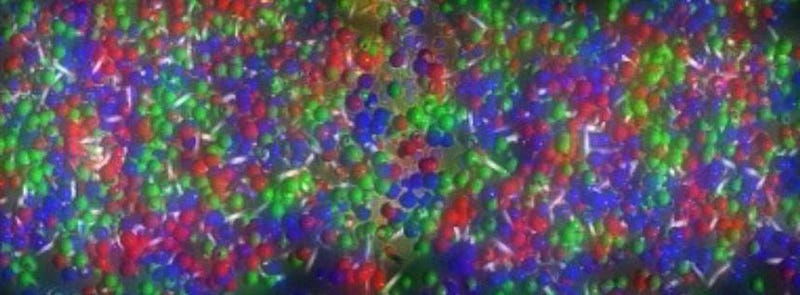
Instead, the Universe is so hot and dense that what we have is known as a quark-gluon plasma. The reason for this is counterintuitive, if the only forces you’re familiar with are gravity and electromagnetism. In those cases, the forces get stronger in magnitude the closer you bring two particles. Halve the distance between two electric charges and the force quadruples between them; halve the distance between two masses and the force might even more-than-quadruple, as General Relativity dictates.
But take two quarks, antiquarks, or a quark-antiquark combination, for example, and halve the distance between them, and the strength of the strong nuclear force that binds them together does something very different. It doesn’t quadruple. It doesn’t even double. Instead, the force between them drops.
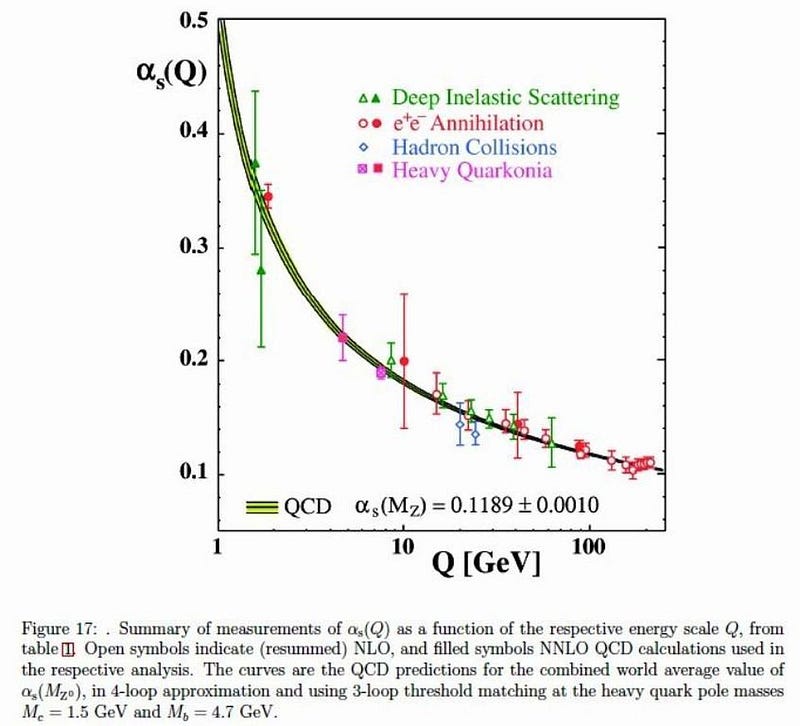
This is weird, but this is how atomic nuclei and the strong nuclear force actually work. Below a certain distance, the force between any two particles with a color-charge (quarks and gluons) actually drops to zero, only increasing as they get farther apart. At the high temperatures and densities present at these very early times, the nuclear force is too weak to bind anything together. As a result, particles simply zip around, colliding with each other, creating new ones and annihilating away.
But as the Universe expands, it both cools and gets less dense. And as time goes on, it becomes harder to make the more massive particles.
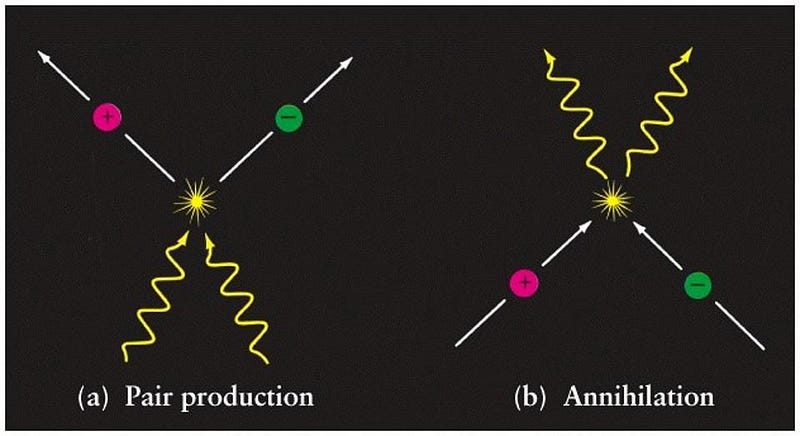
In addition, with the exception of the lightest quarks (up and down, plus anti-up and anti-down) and the lightest charged lepton (the electron, plus the positron), all the other particles are unstable to radioactive decay. As the picoseconds turn into nanoseconds, and the nanoseconds pile up into microseconds, the heavier particles stop being created and disappear from our Universe. Bottom/anti-bottom quarks disappear first, followed by the tau and anti-tau leptons. Then the charm/anti-charm quarks go, followed by the strange/anti-strange quarks.
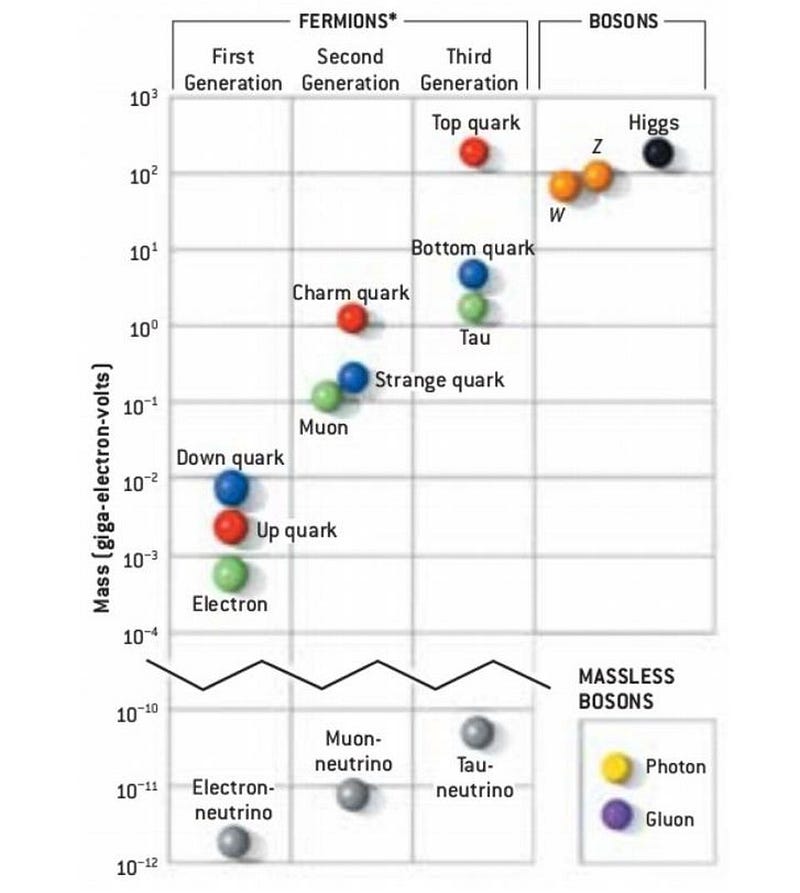
As we lose more and more particle/antiparticle combinations, they create greater numbers of the lighter particle/antiparticle pairs that can still exist, but also greater numbers of photons. Every time we produce two photons from particle/antiparticle annihilation, it slows down the cooling of the Universe a little bit. The Universe is getting cooler and sparser, but it’s also changing what’s in it. In the early stages, only a small-but-substantial percentage of the particles around are photons, neutrinos, and antineutrinos. But as these particles start to disappear, these fractions rise higher and higher.
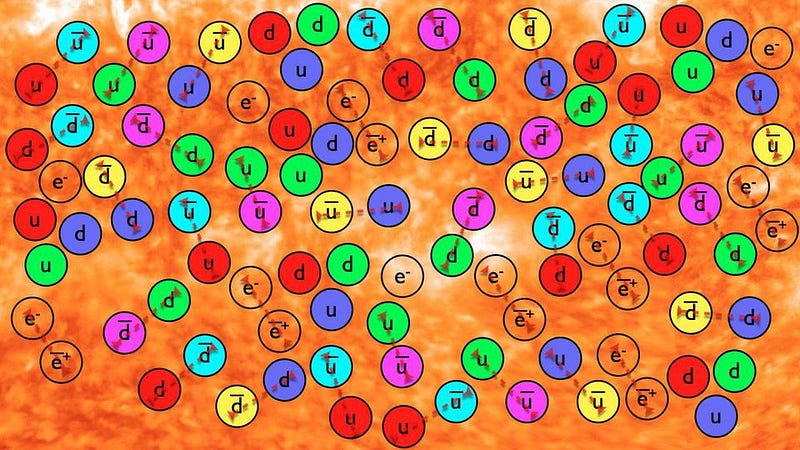
And as the Universe cools even farther, the muons and anti-muons start to decay away, at the same time that the up-and-down quarks (plus the anti-up and anti-down quarks) start to separate away to substantial (femtometer: 10^-15 m) distances. About 10-to-20 microseconds after the Big Bang, we hit a critical temperature/density combination. We’ve now cooled down to a temperature of around 2 trillion K (2 × 10¹² K), and now the quarks and antiquarks are far enough apart that the strong force starts to get substantial.
Just like an unstretched spring doesn’t exert a force but a stretched spring does, the quarks don’t feel a confining force until they reach a certain distance. But once they do, they become bound.

Gradually, we make the transition: from free up, down, anti-up and anti-down quarks to bound protons, neutrons, anti-protons and anti-neutrons. The Universe is still hot enough to make new particle-antiparticle combinations, and was making lots of up/anti-up and down/anti-down quark combinations when things were dense enough.
But now that they’re not dense enough, and we have protons and neutrons (and anti-protons and anti-neutrons) instead, the Universe isn’t hot enough to spontaneously create new proton/anti-proton or neutron/anti-neutron pairs. What this means is that when protons and anti-protons (or neutrons and anti-neutrons) find each other, they annihilate away, and we cannot make new ones.

What happens, then, as the Universe cools through this critical stage is the following:
- the remaining free quarks begin to experience confinement, becoming protons, neutrons, anti-protons, anti-neutrons, and pions (unstable particles known as mesons),
- the mesons decay away, while the anti-protons and anti-neutrons annihilate with the protons and neutrons,
- and this leaves us with protons and neutrons alone, only because at some earlier stage, the Universe created more matter than antimatter.

At last, the Universe starts to resemble something we’d recognize today. Sure, it’s hot and dense. Sure, there are no atoms or even any atomic nuclei. Sure, it’s still filled with a bunch of positrons (the antimatter counterpart of electrons) and electrons, and is still creating-and-annihilating them spontaneously. But most of what exists now, perhaps 25 microseconds after the start of the hot Big Bang, still exists in some form today. The protons and neutrons will become the building blocks of atoms; the neutrinos and antineutrinos and photons will become part of the cosmic background; the leftover electrons that will exist when the electron/positron pairs annihilate away will combine with the atomic nuclei to make atoms, molecules, and complex biochemical reactions possible.

But at this stage, the biggest new thing that occurs is that particles are no longer individual-and-free on all scales. Instead, for the first time, the Universe has created a stable, bound state of multiple particles. A proton is two up and one down quark, bound by gluons, while a neutron is one up and two down quarks, bound by gluons. Only because we created more matter than antimatter do we have a Universe that has protons and neutrons left over; only because the Higgs gave rest mass to the fundamental particles do we get these bound, atomic nuclei.

Owing to the nature of the strong force, and the tremendous binding energy that occurs in these stretched-spring-like interactions between the quarks, the masses of the proton and neutron are some 100 times heavier than the quarks that make them up. The Higgs gave mass to the Universe, but confinement is what gives us 99% of our mass. Without protons and neutrons, our Universe would never be the same.
Further reading on what the Universe was like when:
- What was it like when the Universe was inflating?
- What was it like when the Big Bang first began?
- What was it like when the Universe was at its hottest?
- What was it like when the Universe first created more matter than antimatter?
- What was it like when the Higgs gave mass to the Universe?





